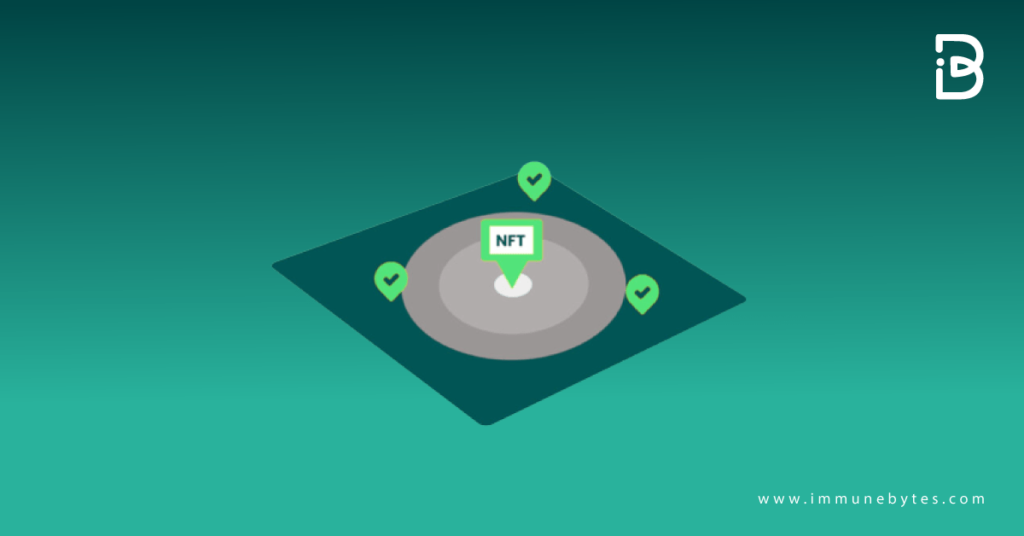IoTeX’s newest project uses verifiable GPS data to mint NFTs that prove you were at a certain place at a certain time.
The latest product from IoTeX, a privacy-focused platform for the Internet of Things, is bringing this new-age concept of proof-of-presence into the crypto world. Let’s get to know what this means for users!
What is Proof-of-Presence?
Table of Contents
Proof-of-Presence refers to persuasive evidence that a particular user, rather than another, is directly responsible for a particular computing action.

The true proof-of-presence provides strong non-repudiation capability, ensuring that any incident can be attributed not just to the user account in which it originated ‘since any account can, in theory, be stolen or taken over by a malicious actor ?but to a specific, real-world person.
What Makes Proof-of-Presence Different?
Let’s take an insight into what PoW and PoS are and how proof-of-presence is a step toward enhancing security!
Proof of Work (PoW)
Proof-of-Work is said to be the original consensus mechanism in a Blockchain network.
With PoW, miners compete against each other to solve a mathematical puzzle on the network and get rewarded, they provide the computing power required to sustain the blockchain and verify transactions as well as ensure the network’s immunity against hacks. The first miner to solve the mathematical puzzle gets rewarded. However, this whole mining mechanism of Bitcoin needs high energy consumption and longer processing time, thereby making it an expensive option.
PoW is the first consensus protocol to be developed and Bitcoin was the first to use it. Another big example that uses PoW is Ethereum.
Proof of Stake (PoS)
To combat the high energy consumption problem of PoW, came the PoS, the more environment-friendly brother of PoW. An alternative method called ‘staking?, allows a deterministic algorithm to choose the nodes based on the number of coins they owned.
The basic idea was to separate the voting power of a miner from its computational power based on the percentage of tokens held by them. The larger the share of tokens held, the more likely they are to be selected to mine the next block.
As PoS needs neither some specific hardware nor consumes any energy, it is one of the least expensive blockchain consensus conventions.
Read more about the different consensus mechanisms in blockchain here!
More on IoTeX’s Pebble Go
Pebble Tracker, a device capable of recording as well as encrypting data from the physical world, innovatively offers a way to bring data ownership to users. The technology is aimed at allowing device owners as well as third parties to verify the authenticity of the data. The device is reportedly capable of capturing data including location, temperature, air quality, motion, and even light levels, and recording it securely for a variety of blockchain-related applications.
This provides a new way to incorporate real-world data into non-fungible tokens, and NFTs, and use verifiable GPS data to mint NFTs that prove you were at a certain place at a certain time. ?This technology can be used to verify the proof-of-presence of a person,? said Larry Pang, Head of business development at IoTeX.
The project, Pebble Go, may not apply to certain popular NFTs but it surely sees potential use cases in sports digital collectibles issued at games, with the location of the venue verified and minted. As the crypto space is currently experiencing a boom in the quantity and value of NFTs, the demand for quality in terms of additional verification and data may also rise.
The company sees it as ?A level of verifiability that connects the physical and digital world in a new way.?
Final Thoughts
Blockchain is continually and with that, rapidly, evolving. The one constant and standing need is security and what proof-of-presence brings to the table, is one more layer of additional security for applications. With that being said, it cannot be denied that code audits and formal verifications are just as important and can’t be overlooked. Just one line of wrongly written code can result in a loss of millions of dollars. Do not leave any stone unturned when deploying your application on the mainnet.
About ImmuneBytes:
We are a team of India-based blockchain security auditors who are skilled and hold experience in their niche. With us, you’ll never have to compromise. We strive to push forward and provide overall surveillance and quality service to our customers. Get in touch with us to get a security audit for your smart contract.?

